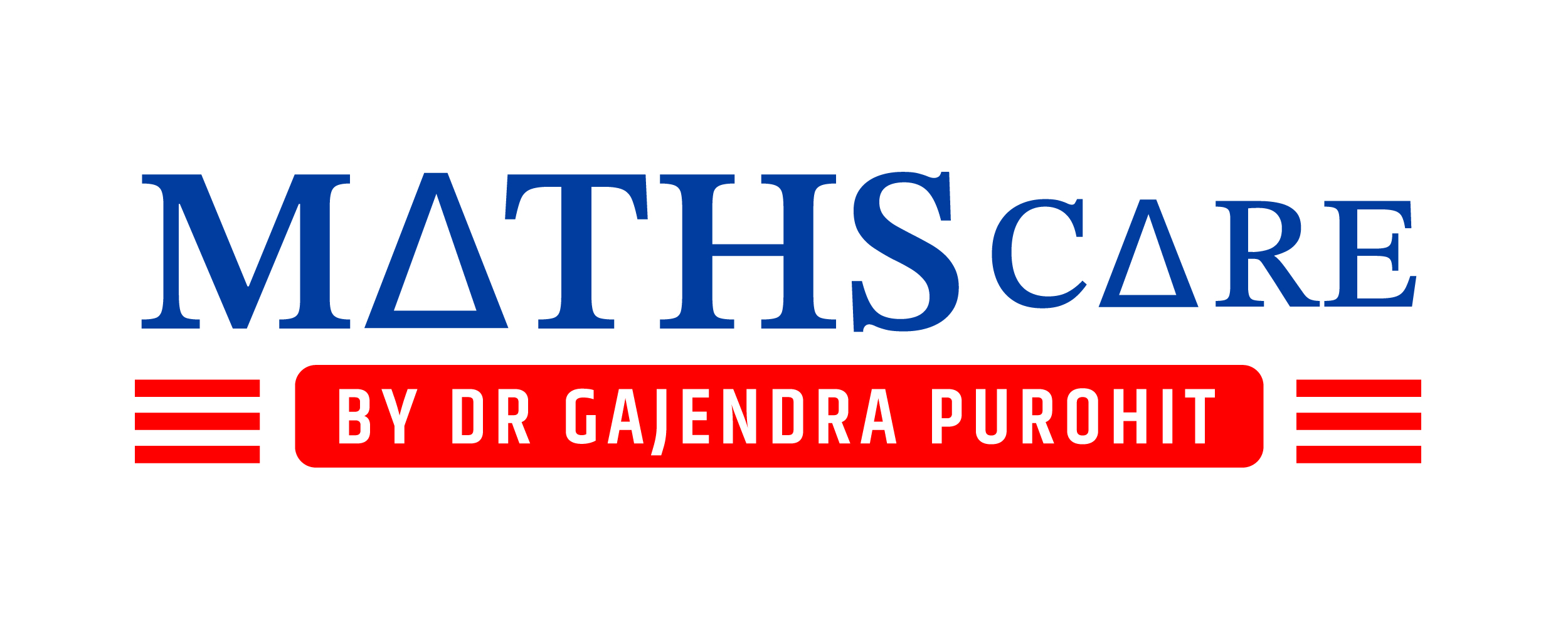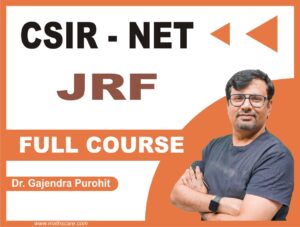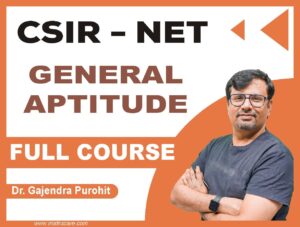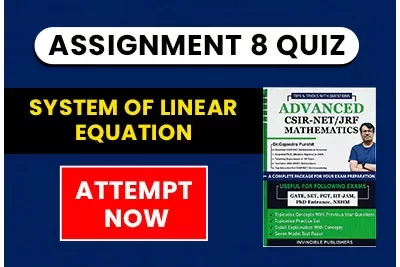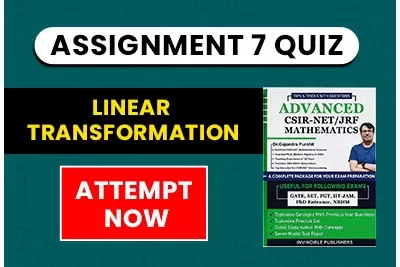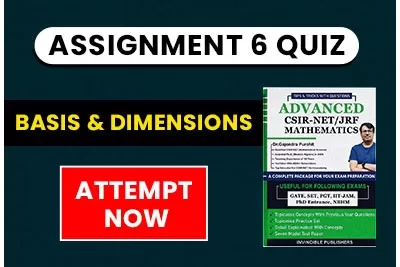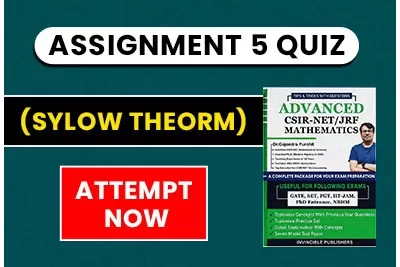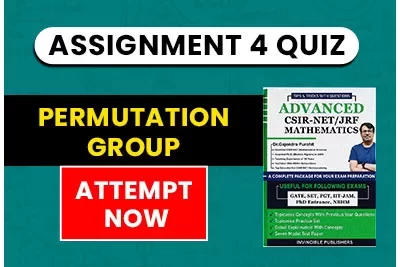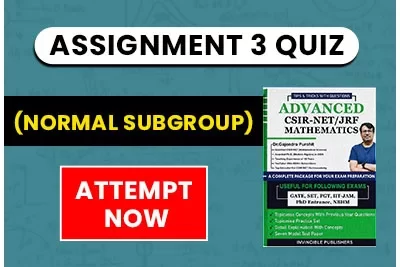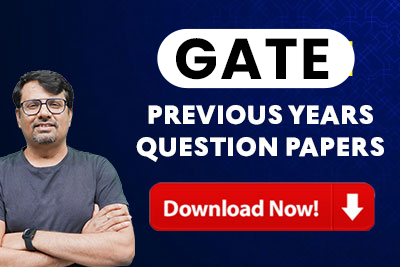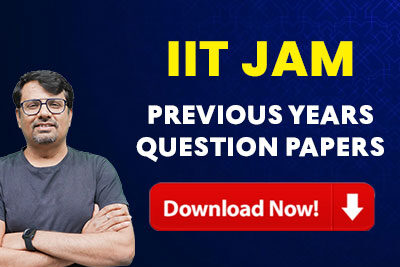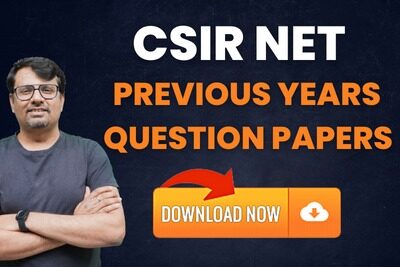CSIR NET
An Overview of Joint CSIR-UGC NET and NTA
Founded in November 2017, the National Testing Agency (NTA) is an independent body in India that administers entrance exams for government employment and educational institutions. The Joint CSIR-UGC NET is a prominent examination that it administers to evaluate applicants for scientific research and lectureships. UGC looks after higher education, and CSIR is a preeminent R&D institution. NTA uses cutting-edge technologies to ensure impartial and open exam administration.
CSIR NET : What is it?
The Council of Scientific and Industrial Research University Grants Commission National Eligibility Test is known by its acronym, CSIR NET. The National Testing Agency (NTA) is conducting this statewide exam to determine who is eligible to receive a Junior Research Fellowship (JRF) and to evaluate candidates for teaching posts in Indian colleges and universities. Particularly, those who pass the Council of Scientific and Industrial Research (CSIR) NET exam are qualified for positions as lecturers in the science and technology fields.
CSIR NET 2023
The NTA opened the CSIR NET Application Form Correction 2023 Window on December 6, 2023. Until December 8, 2023, candidates may change their CSIR NET Application Form. The CSIR NET City Intimation Slip 2023 was available on the official NTA website on Dec 19, 2023. The notification states that the December CSIR NET 2023 exam session will be held on December 26, 27, and 28, 2023. The NTA will open the CSIR NET Application Form Correction 2023 Window on December 6, 2023. Until December 8, 2023, candidates may change their CSIR NET Application Form.
The NTA accepted submissions of the CSIR NET Application Form 2023 from November 1 to December 4, 2023. On November 30, 2023, the application deadline was extended to December 4, 2023. The National Testing Agency (NTA) released the CSIR NET Application Form 2023 and the CSIR NET Notification for the December 2023 session on November 1, 2023.
The National Testing Agency (NTA) has been tasked with administering the CSIR UGC NET exam by the Council of Scientific and Industrial Research (CSIR). This test determines a candidate’s eligibility for Lectureships (LS) and Junior Research Fellowships (JRF) at Indian colleges and universities. For the benefit of candidates, the main points from the CSIR NET Notification 2023 are listed here.
About the UGC-CSIR Joint Fellowship
For training in research techniques under the direction of experts in a range of scientific subjects, CSIR and UGC offer Research Fellowships. The Joint CSIR-UGC NET Fellowships are available in India at accredited colleges, universities, and research facilities. Genuine Indian citizens who meet certain educational requirements are eligible. The program’s main goal is to develop national human resources in science and technology. Junior Research Fellowships (JRFs) are given out by the CSIR twice a year through a test in June and December. In Indian universities, the test establishes eligibility for JRF and Lectureship/Assistant Professor positions. JRF recipients who meet the requirements can apply for assistant professor or lectureship roles. The Lectureship/Assistant Professor qualification has an indefinite validity period. The duration of the Joint CSIR-UGC NET Fellowship is set, and it does not ensure that CSIR-UGC NET will hire you again.
About the Stipend for Junior Research Fellowships
JRFs chosen through CSIR-NET are awarded an annual contingency grant of Rs. 20,000/-along with a stipend of Rs. 31,000/-per month for the first two years. Suppose a candidate is registered for a Ph.D. after two years. In that case, the fellowship is raised to SRF (NET) with a stipend of Rs. 35,000/-per month for the third and following years, contingent on an expert committee’s evaluation of the candidate’s research progress. Non-Ph.D. candidates either continue as JRFs with a salary of Rs. 31,000/-per month for the third year, or their fellowships are terminated by the Committee’s recommendation. The Committee’s decision is final. After the third year, the status of the research is reviewed for possible advancement.
CSIR NET Qualification
The National Testing Agency has specified requirements for applicants applying for CSIR NET 2023. Candidates meeting the eligibility requirements must be no older than 28 years old and hold a BS-MS/BS – 4 years B degree. Tech/B. Pharma/MBBS with a minimum cumulative score of 55%. All applicants must be citizens of India; additionally, to be considered for further rounds of the application process, they must submit supporting documentation proving their eligibility.
Highlights of the CSIR NET Eligibility Criteria
The table below provides a thorough summary of CSIR NET 2023 eligibility requirements.
Exam Name | Council of Scientific and Industrial Research University Grants Commission National Eligibility Test |
Conducting Body | National Testing Agency |
Exam Mode | Online |
Duration | 3 Hours |
Frequency | Twice in a Year |
Age Limit | JRF – The upper age limit for JRF is 28 years as of the closing date of the online submission of the application. A relaxation of up to 5 years is provided for SC/ST/PwD/female candidates and 3 years for OBC (non-creamy layer) candidates. LS – No Upper Age Limit |
Educational Qualification | JRF – M.Sc. or equivalent degree/Integrated BS-MS/BS-4 years/BE/B.Tech/B.Pharma/MBBS with at least 55% marks for general and OBC (non-creamy layer) candidates. A relaxation of 5% marks is provided to SC/ST/PwD candidates. LS – Same as for JRF. |
Criteria for CSIR NET Eligibility : Age Restriction
The following lists the specific age requirements for Assistant Professor/Lecturer and Junior Research Fellowship posts.
There is no age restriction for candidates applying for the assistant professorship.
The maximum age limit to apply for a Junior Research Fellowship is 28 years old.
CSIR NET Age Relaxation: As of July 1, 2023, the maximum age limit for candidates in CSIR NET 2023 is 28 years old. Candidates may, however, consult the table below for specifics on age relaxation according to various categories.
Age Relaxation Category (In Years)
General NA OBC 3 years SC/ST PWD 5 years Females Transgender
CSIR NET Qualification Standards: Qualifications for Education
The following lists the specific educational requirements for CSIR NET 2023; in order to be considered, candidates must meet these requirements:
- The minimum cumulative score required for candidates is a degree in B. Pharma/BE/B.Tech/MSc/MBBS integrated BS-MS/MS-4 years, or an equivalent degree in one of the approved streams.
- Candidates from reserved categories (SC, ST, and PWD) are entitled to a 5% reduction in the minimum qualifying score for CSIR NET 2023. It is noteworthy that candidates holding degrees in B. Pharma/BE/B. Tech/MSc/MBBS integrated BS-MS/MS-4 years are the only ones eligible for the age relaxation.
- Candidates who are enrolled in master’s programs (M.Sc.) are eligible to apply for CSIR NET 2023 as long as they have their education certificates (10+2+3) and their program cannot last longer than two years.
- Applicants in the “Result Under Awaited” category may submit an application by providing a digital copy of their grade report and the higher-ups’ signature on it.
- Candidates for CSIR NET 2023 must be enrolled in the MS-PhD program or be pursuing a B.Sc. degree with a minimum of 55% of total points.
- Applicants who have completed their bachelor’s and master’s degrees in science and engineering and are enrolled in a two-year PhD or integrated PhD program are eligible to apply.
- Candidates must have earned at least 50% of their master’s degree by September 19, 1992, in order to be considered for lectureship posts.
- A bachelor’s degree alone disqualifies a candidate from applying to CSIR NET 2023.
CSIR NET Exam Schedule for 2023
The CSIR NET exam’s detailed examination pattern is provided below:
Mathematical Sciences : CSIR NET is a 60 Questions & 200 Mark computer based test to be completed within 3 hours. It is divided into three parts – Part A, Part B, and Part C. Part A is common to all subjects, based on’ General Aptitude. Part B and Part C are subject-specific and evaluate the candidates’ knowledge in their chosen subject. The paper is conducted within both English & Hindi.
Parts | Specifics | Total Questions | Questions to be Attempted | Marking (+) | Marking (-) |
Part A | General Aptitude | 20 | 15 | +2 | -0.5 |
Part B | Subject Specific | 40 | 25 | +3 | -0.75 |
Part C | Subject Specific | 60 | 20 | +4.75 | NA |
Admit Card for CSIR NET 2023
The Admit Card is now available on the official website, which includes all the pertinent exam information, including the day, time, and exam centre. The steps listed below can be followed by candidates in order to get the admission card:
Go to https://csirnet.nta.nic.in/, the official website, and select the CSIR-UGC NET Admit Card 2023 link that appears on the home page.
Candidates will be prompted to provide the required information on a new page in order to download their admission card.
The candidate’s admit card will appear on the screen after all information has been submitted accurately.
Make sure to print a hard copy of the admit card after downloading it for future use.
The thorough admit card includes the following details:
- Name:
- Roll No.
- Date of Birth
- Subject
- Signature
- Photo
- Location of the Exam
CSIR-NET MATHEMATICS COURSES
CSIR-NET Full Course JRF
CSIR NET | General Aptitude
CSIR-NET TOPICWISE TEST SERIES
Assignment – 8 (System of Linear Equation) from ADVANCE CSIR-NET/JRF MATHEMATICS by Dr. Gajendra Purohit
Assignment – 7 (Linear Transformation) from ADVANCE CSIR-NET/JRF MATHEMATICS by Dr. Gajendra Purohit
Assignment – 6 (Basis and Dimension) from ADVANCE CSIR-NET/JRF MATHEMATICS by Dr. Gajendra Purohit
Assignment – 5 (Sylow Theorm) from ADVANCE CSIR-NET/JRF MATHEMATICS by Dr. Gajendra Purohit
Assignment – 4 (Permutation Group) from ADVANCE CSIR-NET/JRF MATHEMATICS by Dr. Gajendra Purohit
Assignment – 3 (Normal SubGroup) from ADVANCE CSIR-NET/JRF MATHEMATICS by Dr. Gajendra Purohit
CSIR NET PYQs
GATE Mathematics Previous Year Papers pdf download | Mathscare
IIT-JAM Mathematics Previous Year Papers pdf download | Mathscare
CSIR NET Mathematics: Previous Year Papers, Resources and Study Guide
CSIR-NET SYLLABUS
There are four units in the CSIR NET for Mathematics common syllabus (Part B &C). Each chapter has many subtopics. The complete syllabus of Mathematics paper is given below.
Unit – 1
- Analysis
- Elementary set theory, finite, countable and uncountable sets, Real number system as a complete ordered field, Archimedean property, supremum, infimum.
- Sequences and series, convergence, limsup, liminf.
- Bolzano Weierstrass theorem, Heine Borel theorem. Continuity, uniform continuity, differentiability, mean value theorem.
- Sequences and series of functions, uniform convergence.
- Riemann sums and Riemann integral, Improper Integrals.
- Monotonic functions, types of discontinuity, functions of bounded variation, Lebesgue measure, Lebesgue integral.
- Functions of several variables, directional derivative, partial derivative, derivative as a linear transformation, inverse and implicit function theorems.
- Metric spaces, compactness, connectedness. Normed linear Spaces. Spaces of continuous functions as examples.
- Linear Algebra
- Vector spaces, subspaces, linear dependence, basis, dimension, algebra of linear transformations.
- Algebra of matrices, rank and determinant of matrices, linear equations.
- Eigenvalues and eigenvectors, Cayley-Hamilton theorem.
- Matrix representation of linear transformations. Change of basis, canonical forms, diagonal forms, triangular forms, Jordan forms.
- Inner product spaces, orthonormal basis.
- Quadratic forms, reduction and classification of quadratic forms
UNIT – 2
- Complex Analysis
- Algebra of complex numbers, the complex plane, polynomials, power series, transcendental functions such as exponential, trigonometric and hyperbolic functions. Analytic functions, Cauchy-Riemann equations.
- Contour integral, Cauchy’s theorem, Cauchy’s integral formula, Liouville’s theorem, Maximum modulus principle, Schwarz lemma, Open mapping theorem.
- Taylor series, Laurent series, calculus of residues.
- Conformal mappings, Mobius transformations.
- Algebra
- Permutations, combinations, pigeon-hole principle, inclusion-exclusion principle, derangements.
- Fundamental theorem of arithmetic, divisibility in Z, congruences, Chinese Remainder Theorem, Euler’s Ø- function, primitive roots.
- Groups, subgroups, normal subgroups, quotient groups, homomorphisms, cyclic groups, permutation groups, Cayley’s theorem, class equations, Sylow theorems.
- Rings, ideals, prime and maximal ideals, quotient rings, unique factorization domain, principal ideal domain, Euclidean domain.
- Polynomial rings and irreducibility criteria.
- Fields, finite fields, field extensions, Galois Theory.
- Topology
- Basis, dense sets, subspace and product topology, separation axioms, connectedness and compactness.
UNIT – 3
- Ordinary Differential Equations (ODEs)
- Existence and uniqueness of solutions of initial value problems for first order ordinary differential equations, singular solutions of first order ODEs, system of first order ODEs.
- General theory of homogeneous and non-homogeneous linear ODEs, variation of parameters, Sturm-Liouville boundary value problem, Green’s function.
- Partial Differential Equations (PDEs)
- Lagrange and Charpit methods for solving first order PDEs, Cauchy problem for first order PDEs.
- Classification of second order PDEs, General solution of higher order PDEs with constant coefficients, Method of separation of variables for Laplace, Heat and Wave equations.
- Numerical Analysis
- Numerical solutions of algebraic equations, Method of iteration and Newton-Raphson method, Rate of convergence, Solution of systems of linear algebraic equations using Gauss elimination and Gauss-Seidel methods, Finite differences, Lagrange, Hermite and spline interpolation, Numerical differentiation and integration, Numerical solutions of ODEs using Picard, Euler, modified Euler and Runge-Kutta methods.
- Calculus of Variations
- Variation of a functional, Euler-Lagrange equation, Necessary and sufficient conditions for extrema. Variational methods for boundary value problems in ordinary and partial differential equations.
- Linear Integral Equations
- Linear integral equation of the first and second kind of Fredholm and Volterra type, Solutions with separable kernels. Characteristic numbers and eigenfunctions, resolvent kernel.
- Classical Mechanics
- Generalized coordinates, Lagrange’s equations, Hamilton’s canonical equations, Hamilton’s principle and principle of least action, Two-dimensional motion of rigid bodies, Euler’s dynamical equations for the motion of a rigid body about an axis, theory of small oscillations.
UNIT – 4
- Descriptive statistics, exploratory data analysis
- Sample space, discrete probability, independent events, Bayes theorem. Random variables and distribution functions (univariate and multivariate); expectation and moments. Independent random variables, marginal and conditional distributions. Characteristic functions. Probability inequalities (Tchebyshef, Markov, Jensen). Modes of convergence, weak and strong laws of large numbers, Central Limit theorems (i.i.d. case).
- Markov chains with finite and countable state space, classification of states, limiting behavior of n-step transition probabilities, stationary distribution, Poisson and birth-and-death processes.
- Standard discrete and continuous univariate distributions. sampling distributions, standard errors and asymptotic distributions, distribution of order statistics and range.
- Methods of estimation, properties of estimators, confidence intervals. Tests of hypotheses: most powerful and uniformly most powerful tests, likelihood ratio tests. Analysis of discrete data and chi-square test of goodness of fit. Large sample tests.
- Simple nonparametric tests for one and two sample problems, rank correlation and test for independence. Elementary Bayesian inference.
- Gauss-Markov models, estimability of parameters, best linear unbiased estimators, confidence intervals, tests for linear hypotheses. Analysis of variance and covariance. Fixed, random and mixed effects models. Simple and multiple linear regression. Elementary regression diagnostics. Logistic regression.
- Multivariate normal distribution, Wishart distribution and their properties. Distribution of quadratic forms. Inference for parameters, partial and multiple correlation coefficients and related tests. Data reduction techniques: Principle component analysis, Discriminant analysis, Cluster analysis, Canonical correlation.
- Simple random sampling, stratified sampling and systematic sampling. Probability proportional to size sampling. Ratio and regression methods.
- Completely randomized designs, randomized block designs and Latin-square designs. Connectedness and orthogonality of block designs, BIBD. 2K factorial experiments: confounding and construction.
- Hazard function and failure rates, censoring and life testing, series and parallel systems.
- Linear programming problem, simplex methods, duality. Elementary queuing and inventory models. Steady-state solutions of Markovian queuing models: M/M/1, M/M/1 with limited waiting space, M/M/C, M/M/C with limited waiting space, M/G/1.
All students are expected to answer questions from Unit I. Students in mathematics are expected to answer additional questions from Unit II and III. Students within statistics are expected to answer additional question from Unit IV.
CSIR NET FAQs
Although both the exams are conducted for PhD programs, Assistant Lectureship & Junior Research Fellowship by NTA, here CSIR NET is conducted for Science Students with 5 subjects & UGC NET is conducted for Arts Students with 26 subjects. The upper age limit for JRF in UGC NET is 30 years whereas in CSIR NET it is 28 years.
CSIR NET is a highly competitive exam but you can crack it in one month if you have a strong subject foundation, it is tough to do so but not impossible.
Yes, you can. All you need is a well structured study plan, reliable study resources, a study group and a mentor to guide you wherever you get stuck. With all these in handy, a CSIR NET aspirant can definitely crack the exam without coaching.
No, to appear for the CSIR NET exam you must be pursuing your Master’s or equivalent course or candidates who have completed their Master’s.
MSc /BS-MS/ BS/ BTech or any equivalent degree in the field of Mathematics to meet the eligibility requirements. The upper age limit for JRF in UGC NET is 30 years whereas in CSIR NET it is 28 years, there is no upper age limit for Lectureship.
Brush up your basics and then move towards advanced concepts. Solve as many questions as possible similar to the exam pattern. Keep revising concepts from time-to-time. Give mocks and quizzes with the exact exam environment.
CSIR NET Mathematics Cutoff for JRF approximately stays around 100 marks while for CSIR NET Mathematics Cutoff for LS is around 90 to 95 marks.
CSIR NET is an exam conducted by NTA for students aspiring to pursue PhD and for becoming Assistant Professors. Also for students who wish to be a part of Junior Research Fellowship Programs.
CSIR NET exam is conducted twice a year. One in the month of June & another in the month of December.
Thank you for reading, to gain more information about IIT JAM/ GATE/ CSIR-NET and learn mathematics and general aptitude from Dr. Gajendra Purohit Sir visit – click here
And for university courses, blogs, quizzes and ask doubts from sir visit – https://www.mathscare.com/
